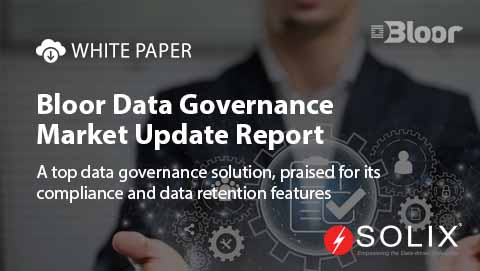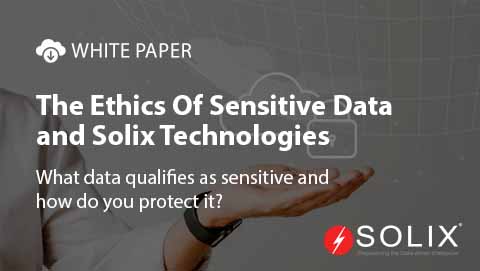Data Catalog vs Enterprise Service Repository
When delving into the world of data management, the concepts of a data catalog and an enterprise service repository often arise. But what exactly distinguishes these two vital components In essence, a data catalog serves as a comprehensive inventory that organizes data assets across an organization, making it easier to discover and manage information. Meanwhile, an enterprise service repository acts as a centralized hub for managing and deploying services across an enterprise architecture. In other words, while a data catalog focuses on data, the enterprise service repository concentrates on services used to access that data.
As I navigated through my career in data management, I faced numerous dilemmas on whether to prioritize a data catalog or enterprise service repository within my organization. The choice was not merely a decision of one over the other, but rather about integrating both to foster seamless data governance and service management. In this blog, I aim to share practical insights, benefits, and actionable recommendations regarding the nuances of data catalog vs enterprise service repository that can further enhance your understanding and strategies in this field.
Understanding Data Catalogs
A data catalog can be thought of as a library for an organizations data. It includes metadata about various data assets, helping users easily search for, understand, and utilize data efficiently. Data catalogs help data stewards and analysts to find the right data sets for their projectsthink of it as having an intuitive search engine specifically designed for your organizational data.
Moreover, employing a robust data catalog in your organization can significantly promote data governance, improve data quality, and enable better decision-making. By organizing data in an accessible manner, you empower your teams to innovate and inspire rather than search endlessly in a sea of data. Just imagine being a data analyst needing to extract valuable insights from a vast database, only to discover that navigating through numerous databases is cumbersome. Wouldnt it be much easier to have a central repository that details all your available data This is the core value a data catalog offers.
Diving Into Enterprise Service Repositories
On the other hand, an enterprise service repository is fundamentally about services. It not only acts as a storage for service definitions but also plays a crucial role in how services interact with one another within an enterprise architecture. To put it simply, if you think of your organizations data as assorted recipes, then the enterprise service repository represents the kitchen tools, techniques, and processes that bring those recipes to life.
In many organizations, managing services can become complex, especially with many microservices and APIs in play. The beauty of an enterprise service repository lies in its ability to simplify this complexity by providing thorough documentation, version control, and lifecycle management of these services. This ensures that your development teams can easily discover, reuse, and maintain the services required to power their applications.
Making Sense of Data Catalog vs Enterprise Service Repository
While both of these elements might seem disparate at first glance, they actually share a symbiotic relationship within data and service ecosystems. A data catalog facilitates better data management, while an enterprise service repository enhances service management. Combining the two can yield remarkable results, allowing organizations to cultivate a robust data architecture that serves as the backbone for informed decision-making and agile service deployment.
For instance, in my experience, integrating a data catalog with an enterprise service repository enabled my organization to streamline operations significantly. Data scientists could easily find and access datasets they needed, while developers could swiftly locate the services required to use that data in their applications. This synergy reduced the friction between different teams and improved overall productivity.
Practical Recommendations
The choice between implementing a data catalog vs enterprise service repository doesnt have to be binary. Instead, I recommend pursuing a unified approach that incorporates a data catalog as well as an enterprise service repository. Here are some actionable steps you can take based on my experiences
- Assess Current Needs Begin by evaluating your organizations specific needs. Are you primarily struggling with poor data discoverability, or is it more about managing services Understanding these pain points will help you prioritize which solution to implement first.
- Explore Integration Tools Look for existing technologies that facilitate seamless integration between data catalogs and enterprise service repositories. This way, your teams can work cohesively across data and service environments.
- Educate Your Teams Invest in training your teams to understand the importance of both systems. Ensuring everyone appreciates how the data catalog vs enterprise service repository can enhance their workflows can lead to wider acceptance and engagement.
- Continuous Feedback Loop Implement a system for gathering ongoing feedback from your teams. This will help you continuously refine and improve data management and service deployment strategies.
Connecting with Solix Solutions
For organizations looking to bridge their data catalog and enterprise service repository needs, partnering with Solix can be immensely beneficial. Solix offers solutions that can help you effectively manage your data and services, ensuring you have a streamlined, efficient architecture.
To dive deeper into how Solix can assist in this realm, I recommend checking out their Data Management Solutions, which specifically focus on simplifying data governance and unlocking the value of your data.
As you embark on the journey toward understanding and implementing these solutions, feel free to reach out to Solix for more guidance. You can contact them at 1.888.GO.SOLIX (1-888-467-6549) or visit this contact page for further consultation.
Final Thoughts
In wrap-Up, understanding the distinction and relationship between a data catalog vs enterprise service repository is crucial for modern organizations seeking to harness their data and services effectively. By leveraging both concepts, you can create a more agile, informed organization that maximizes its potential.
As an enthusiast in the evolving field of data management, I firmly believe that fostering a unified approach leads to better outcomes. My journey with these tools has taught me the importance of not just innovative technology but also the human aspectunderstanding your teams needs, guiding them through changes, and celebrating successes are just as vital.
By implementing the right strategies and collaborating with experts at Solix, your organization can thrive in todays data-driven landscape.
About the Author Sam is a passionate data management enthusiast with years of experience navigating the complexities of data catalog vs enterprise service repository. He believes that by understanding and leveraging the strengths of both, organizations can achieve unprecedented growth and insight.
Disclaimer The views expressed in this blog are the authors own and do not necessarily reflect the official position of Solix.
Sign up now on the right for a chance to WIN $100 today! Our giveaway ends soon‚ dont miss out! Limited time offer! Enter on right to claim your $100 reward before its too late! My goal was to introduce you to ways of handling the questions around data catalog vs enterprise service repository. As you know its not an easy topic but we help fortune 500 companies and small businesses alike save money when it comes to data catalog vs enterprise service repository so please use the form above to reach out to us.
-

-

-
 On-Demand Webinar
On-Demand WebinarThe Power of Less: How Data Minimization Drives Data Privacy Compliance
Watch On-Demand Webinar
